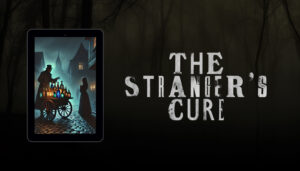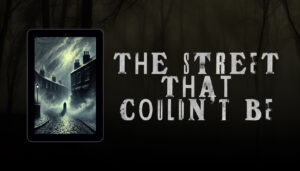In this post, I’ll be discussing the systems I have in place and the software/physical products I use to organise my author business.
I feel it’s important to understand what goes into the back end of a company, but always remember, one solution isn’t for everyone. You figure out what you need to do, and roll with it.
You can always change in the future!
One thing to note, whilst I mention some programmes, I’m not an affiliate for any of them. I don’t receive any money, I just wanted you to see what I use and understand why I use it.
Software
Notion.so
I’ve only been using this software for the last few months, but it’s been a complete game changer in how I keep track of everything going on in my author business.
Be warned, dear reader. If you’re anything like me, limit the time you spend tinkering with your main Hub. It can quickly become a complete time-suck, albeit an enjoyable one.
I use it for several aspects of my business, including:
- Goals (overall business, five yearly, yearly, quarterly and monthly)
- Tracking the status of my novels (including some lush kanban boards)
- Website, blogging and research (more kanbans)
- Future plans (such as non-fiction books I don’t want to focus on just yet)
- Reading records (broken down by year and quarter)
- CliftonStrengths and associated research
- Covers for sale and sold on my pre-made ebook cover design business
I only use the web-based version of this software, but it is available as a desktop app, along with having an accompanying app for smart phones. Since I’ve already got too much on my phone and I’m streamlining that, I didn’t really see the need.
That might change in the future, though.

There’re plenty of templates available to download that people who’re way smarter than me have set up, but I like to do things my way. I’ve kept it as simple as I wanted, but also colour-coded a few bits, just to give it some interest.
As of the time of writing, they have four plans:
- Free – best if you’re just working on your own
- Plus – $8 per user per month – for smaller groups working together
- Business – $15 per user per month – for companies with several collaborating teams
- Enterprise – POA – advanced controls and support to help run a whole organisation
I’m just using the free version, because that’s what suits my needs right now.
You can find out more about Notion.so by visiting their website.
Scrivener
Gotta say, I love my some Scrivener. This is the first piece of writing software that I invested in as part of my author business, mainly because multiple different authors recommended it to me.
It’s grown over the years, and it has been a bit of trial and error but I love it. It’s hard to get to grips with, but there’re always tutorials available, support, and even full YouTube videos dedicated to this complex but freeing software.

I have the desktop version, which integrates with ProWritingAid (won’t be talking about that, as it’s not an organisation thing, it’s editing). However, this is one software I also have on my smartphone and my tablet.
I sometimes write on the go, but mainly it’s for keeping track of any brief lines of dialogue that come to me when I’m not sitting at the desk.
It was a bit of a faff to set up syncing with Dropbox, especially in the early days when I wasn’t that tech-savvy, but now it’s all sorted, it’s great. Word of warning though, if you’re working with someone, make sure only one person’s working on the file. If you’re both making changes, you’re gonna come into some REAL conflicting issues.
I’ve warned you.
As of the time of writing, there’re multiple different purchase options available:
macOS & Windows
£49.99 – Standard License – one time purchase with lifetime updates
£42.49 – Educational License – as above
iOS
£20.99 – Scrivener for iPad, iPhone and iPod Touch – requires Dropbox for syncing
Bundles
£79.98 – Scrivener for both macOS and Windows
I invested in the macOS and the iOS versions, purely because that’s what I needed to do.
You can find out more about Scrivener, and the other products from the same company, by visiting the Literature and Latte website here.
Vellum
I know I said I wouldn’t talk about ProWritingAid because it’s editing, and the same sort of applies to Vellum. It’s not strictly organisational, but it’s key to how my business runs.
And this is my blog, so there. I’m covering it.
However, this one’s a controversial one now, but not for the reasons you might think. Vellum, at the time of writing, is only supported on Mac, not Windows. Don’t @ me, it’s not my fault, I’m just saying.
Before I get onto the rest, there is an alternative, which I cannot comment on because I haven’t tried it. It’s called Atticus, and was developed by Dave Chesson, founder of Kindlepreneur and Publisher Rocket. Visit their website for more info here.
Anyway, back on track.
Vellum was the second software I purchased when I set up my business. At a cost of $249 (at the time of writing), it’s a hefty chunk for someone just starting out in this business, but I wanted to make sure I gave myself the best start before I actually started publishing.
This is for a lifetime license, and it’s a desktop app.

The biggest bonus for me on this is the ease and the flexibility. With the most recent update (which ties in really nicely with my young adult fantasy series, The Adventures of Eddie Skillen), they’ve introduced handwriting as a formatting option.
Basically, highlight the text, change it to one of the handwritten fonts, et voila!
They also have some really pretty ways of formatting chapter headings, dividers, fonts and more. It’s easy to use, and I’ll be putting together book bundles later down the line.
It exports the correct file formats for the major ebook retails (Apple, Nook, Amazon etc), along with print-ready PDFs.
At the time of writing, there are two pricing options:
Vellum Press (not inc VAT) – £209.99 – unlimited ebook and print creation
Vellum eBooks (not inc VAT) – £169.99 – unlimited ebook creation
You can find out more about the product by visiting their website here.
Systems
Naming files
Honest to whatever’s watching over us, I never thought I’d take so much joy in naming files.
Actually, correction, I don’t enjoy it, but it’s a bloody necessary evil if I’m gonna keep track of everything I’m working on.
I used to just shove things in folders with no actual structure. Then I spent about an hour searching for a book blurb I’d written back in the day, and my subconscious gave me a good slap, and I changed.
Now, I file digital documents thusly:
Date – Project Name – Project title – Version – Author
For example:
05.02.2023 – RPHAuthor blog – How do I organise my author business – V1 – Robyn Howley
Not only does this help me figure out what the hell’s going on, it also helps if anything (god forbid) happens to me. My next of kin will understand what I’m working on, where I’m at with it, and hopefully, hopefully, they can continue as per my last wishes.
Monthly & Quarterly Goals
I love planning, and it should go without saying that I always make sure I set myself monthly and quarterly goals.
I won’t go into too much detail, as they’re quite personal for me, but suffice to say, if I didn’t do this, I wouldn’t have a clue what I was going to do.
This is just the way my personality works. As I mentioned in my previous blog post, my key strengths (CliftonStrengths from Gallup) are:
- Intellection
- Futuristic
- Learner
- Strategic
- Discipline
As you can probably tell from those, I’m high on the planning, learning and reflecting. Taking that test allowed me to understand not just the how my brain works, but the why. That’s the important bit.
My way of tracking, monitoring and planning will not be the same as yours. Plenty of authors I listen to say they can’t plan more than a few days, or even a few hours ahead. That’s absolutely fine.
It works for them, and taking an hour or three to plan my monthly and quarterly goals gives me all the feels.
Physical solutions
Planners (Daily and Weekly)
I have a HUGE mental-boner for stationary.
It’s, like, a problem. One I have no desire or intention of changing, ever.
Me loves a good notebook.
Shh.
Not important.
So, with all the digital solutions I use to organise my business, I still need that little physical papery bundle of joy to keep track. This blog article, once written, gets a little tick next to it in my daily planner.
Once I’ve written the short stories I’m doing for the Activated Authors event (Flash Fiction February 2023), those’ll be ticked in the daily and the Crafty Fox weekly planner. Two ticks, two hits of “hell yas!” and onto the next thing.
There’s something about writing the “to do” with a good ol’ fashioned pen that helps calm my mind, and also helps me prioritise what needs to be done.
I’m not going to say much more than that. It should be obvious already. Stationary, good. Bank balance (shrugs) will cope.
Whiteboards
I did not, however, spent a tonne on a whiteboard. No.
It was going to be thrown in a skip, so I took it.
It’s mine now, and it’s how I visualise my timeline and goals for the quarter. It’s fine sticking them on my Notion.so dashboard, but I need to see them. To tick those boxes.
To know that I’m working forward.
Also, it helps when my partner comes in and says “what’cha dooooiin’?” I can just point at the board and glare.
In summary
So there we have it, a high-level overview of how I organise my author business, and what I’ve put in place to make sure I keep track of everything I’m working on.
There’s plenty more I could write about, but this has gone on for far too long already!
I hope you found that insightful, and now it’s over to you. If you’re working on a specific project (it doesn’t have to be writing related by the way), what systems, tools or strategies do you use to keep track of everything?
I’d love to hear from you, so make sure you let me know in the comments below, give the blog a follow, or sign up to my free author newsletter.
Look forward to hearing from you soon!
Robyn



